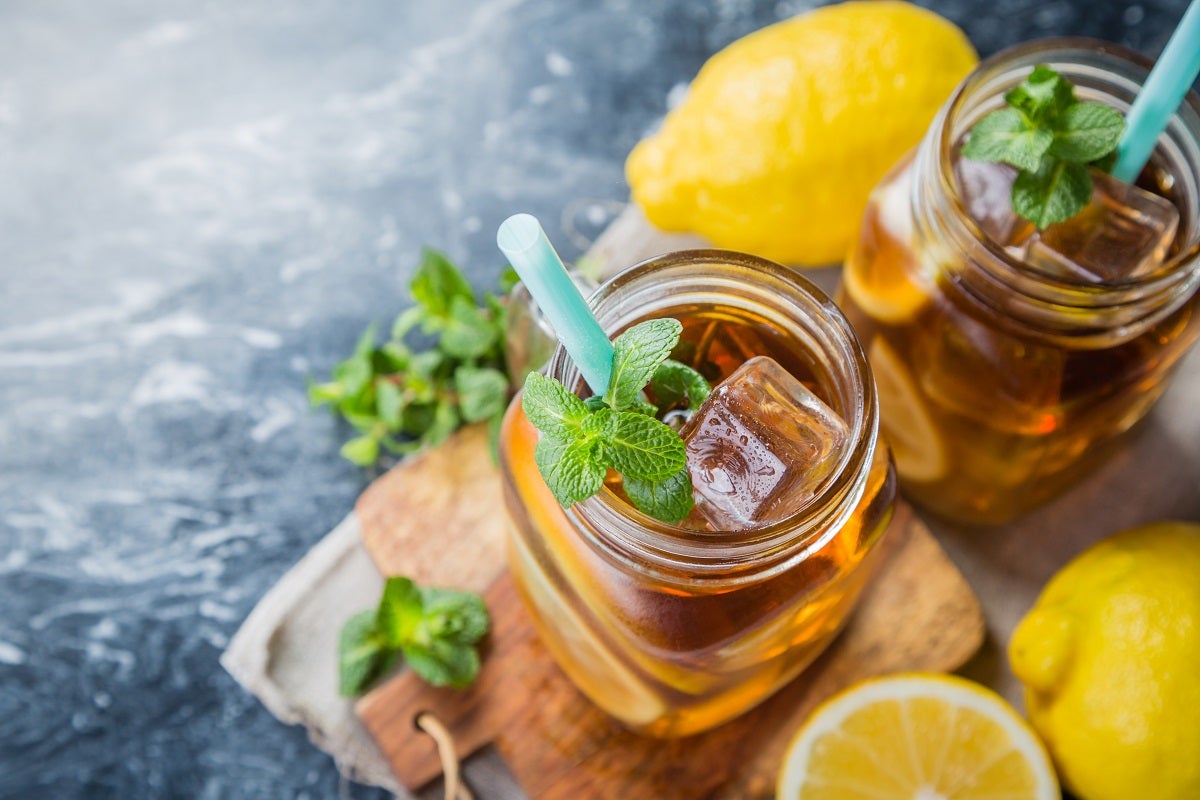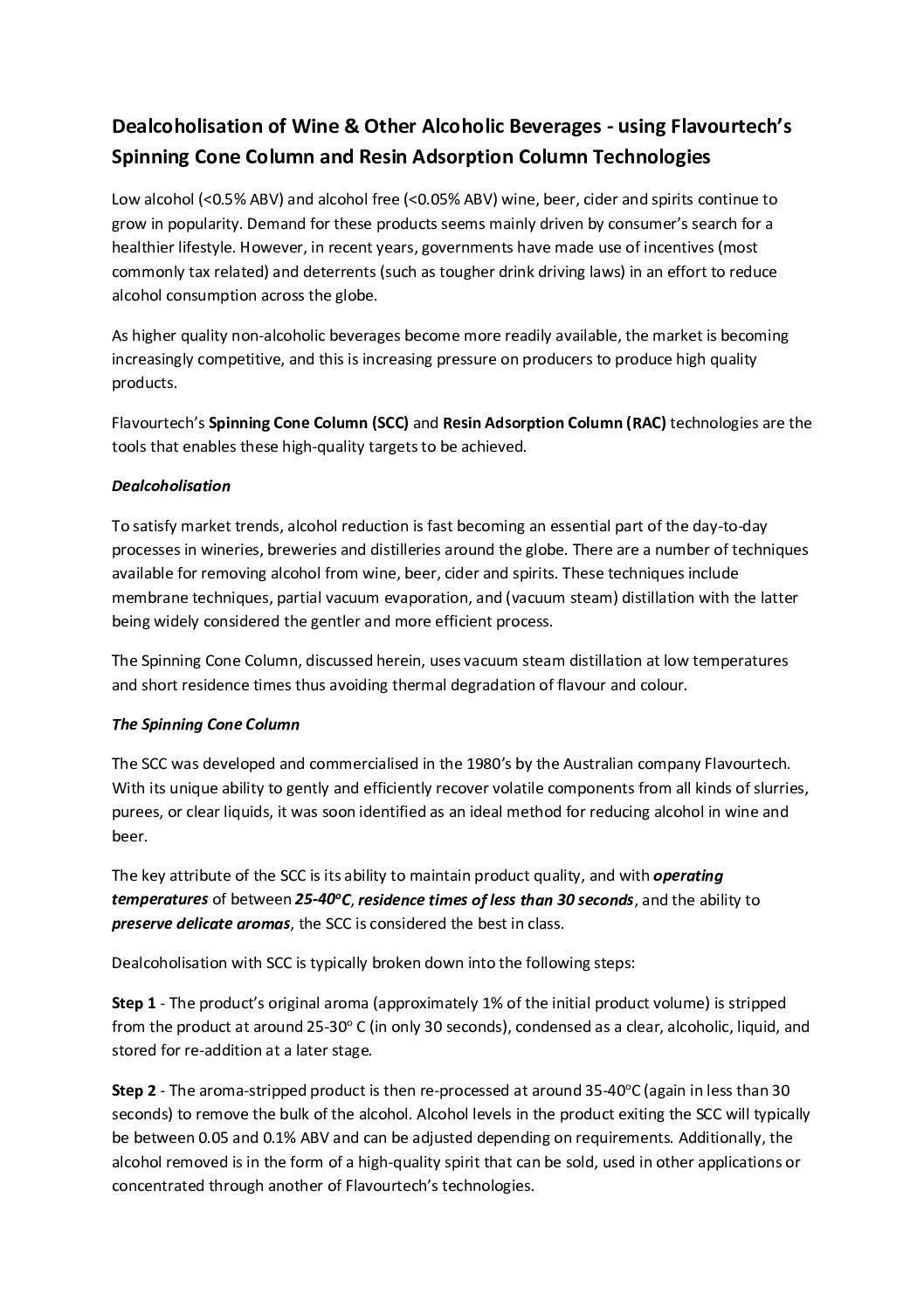
The convenience and availability of Ready To Drink (RTD) tea and coffee is consistent with the changing lifestyle of consumers worldwide. These days, most people have less free time, and consumers are trending towards eating lighter meals on the go. RTD tea and coffee is a primary beneficiary of this trend as consumers are also more health-conscious and look for healthier alternatives to traditional soft drinks. RTD beverages have therefore become an increasingly dynamic category. This article discusses some of the key technology innovations driving category growth across the major regional markets for these products.
Tea is currently the second most consumed beverage in the world, next to water. Convenience packaging in the tea and coffee markets began with the invention of the teabag in the early 1900s. This was followed by instant tea and coffee, iced-tea mixes and eventually, ready-to-drink (RTD) tea and coffee in the 1980s. RTD beverages bring the ultimate convenience to consumers. They need no preparation and can be consumed immediately, anywhere. RTD bottles and cans allow easy distribution and products are available to consumers at various points of consumption, such as fast food outlets and vending machines.
There are also numerous variables available to help drive market growth in the RTD tea market. For example, RTD tea manufacturers are adding fruit flavours, active botanical extracts and varying sweetness levels to their products to differentiate them from the competition. The possibilities are endless for RTD tea manufacturers as they can develop virtually unlimited combinations in the preparation of new products.
The RTD tea market in the USA is currently estimated to be worth above $1.5 billion and is expected to enjoy double-digit growth over the next five years. RTD tea and coffee represent only a small percentage of overall beverage consumption in the US, especially compared to soft drinks, and is expected to continue growing faster than other beverage categories.
Assisting RTD beverage companies in the USA, Asia and Europe are various specialist technologies manufactured by the Australian company, Flavourtech. By focusing on thin-film continuous processing, short residence times and low temperatures their Spinning Cone Column (SCC), Centritherm® evaporator and Integrated Extraction System (IES) technologies assist manufacturers around the world in producing premium quality RTD tea and coffee products.
The Integrated Extraction System (IES)
The Integrated Extraction System (IES) was specifically designed as a unique and revolutionary way to produce premium liquid extracts from coffee and tea slurries.
Two key characteristics of the IES are:
1. Ability to capture and preserve key flavour notes for inclusion in the final extract. Aromatic compounds of fresh-brewed roast and ground coffee, or distinctive varietal characteristics of tea blends, are captured at their peak quality.
2. Flexibility of a continuous modular system. The unmatched flexibility of this modular approach means that some of the individual modules can be combined with existing processes or installed in stages.
The IES is the first system in the world to couple state-of-the-art flavour-recovery technology, as used by many international flavour houses, with the extraction of soluble solids.
At the core of the system is the patented Spinning Cone Column (SCC), now widely acknowledged as the world’s premier flavour-recovery technology. The SCC is the fastest, most efficient method for the capture and preservation of volatile flavour components, from all kinds of liquid and slurry substances.
When a slurry of coffee beans or tea leaves and water is introduced into the SCC, the beverage is literally brewed within the closed system. The SCC effectively performs the dual roles of flavour and soluble-solids extraction simultaneously, thus avoiding intermediate flavour loss or degradation.
Also unique in the IES system is the Centritherm® evaporator, which uses spinning cone technology for evaporation with only one-second heat contact time at low temperatures.
How does the IES work?
The IES comprises the following modules:
Slurry Preparation module
This module accepts tea leaves or roasted coffee beans and employs specialised wet milling techniques to minimise flavour loss. Water is mixed with the milled material to form a slurry mixture which is then fed into the Flavour Extraction module.
Flavour Extraction module
The Flavour Extraction module (SCC) collect s volatile flavour compounds as soon as they are produced by the brewing process. The extracted flavour is heavily weighted in light, “front-end” compounds generally lost in other extraction techniques and does not require further rectification. It is then stored, avoiding further potential damage, to be added to the concentrated extract at a later stage.
Clarification module
The flavour-stripped slurry exiting the SCC is a mixture of extract and insoluble solids. The Clarification module is a three-stage process to separate insoluble solids from liquid extract. The first stage removes bulk solids while the second stage removes fine particulates. A third, optional stage polishes the extract to a higher clarity. Depending on final product requirements and packaging, the operator can decide which of these stages are implemented.
Washing module (optional)
This optional module is a way of washing spent tea leaves or coffee grounds to increase the yield of soluble solids recovered from the leaf or bean. For tea, the use of the washing module can increase the yield of soluble solids extracted up to 95% ensuring maximum recovery for the manufacturer.
Concentration module
This consists of the Centritherm evaporator: a centrifugal evaporator with extremely short residence time (around 1 second ). High concentration r atios can b e achieved without thermal damage, thereby protecting colour, while achieving concentrations not possible in traditional evaporators.
Flavour Extraction from Tea & Coffee
In Coffee Slurry processing the IES produces a final coffee extract which is as good as, and in many cases better, than freshly brewed coffee. The GC analysis below shows a comparison between a commercially available coffee extract and one produced by the IES. The high concentration of volatile compounds and dominance of “front -end” characters in the IES sample is attributable to the fact that it was collected from a slurry of fresh-roasted coffee, not a liquid extract.
In Tea Slurry processing the IES can collect the delicate, floral character of freshly brewed tea by literally brewing the tea within the SCC in only 2 5 seconds. The slurry of water and milled tea leaves passing through the SCC greatly enhances the recovery, in terms of both quality and quantity, of volatile compounds and soluble solids.
The IES can also be used to manufacture Soluble (Instant) Tea Powder. In traditional soluble tea manufacturing processes, much of the typical tea flavour is lost. Major flavour losses traditionally occur during the extraction, concentration and drying steps. Often soluble teas do not contain any of the floral character distinctive of a fresh brew. The IES process first removes the flavour from the tea as it is being brewed so that it can be stored to protect the delicate “top-notes”. The extract is then concentrated to high levels using the Centritherm evaporator. Finally, the flavour is added back to the concentrated extract immediately prior to spray or freeze-drying.
Concentration of Tea & Coffee Extracts
Today tea and coffee extracts are usually concentrated to higher soluble solids levels for convenience, to reduce transportation and packaging costs and reduce energy consumption in subsequent drying processes. This concentration is normally performed by traditional evaporators, like rising film plate systems, or membrane systems, such as Reverse Osmosis. The Centritherm evaporator, however, offers a number of unique benefits when processing tea and coffee extracts.
These benefits include:
• High concentrations are readily achievable (without product recycle).
• Viscous tea and coffee concentrates are easily handled.
• Exceptionally short residence times (~1 sec on the heating surface).
• Low operating temperatures (around 50°C).
• Negligible thermal impact resulting in high quality concentrates.
High-quality Tea Concentrates
Both green and black tea extracts are extremely sensitive to heat. Exposure to elevated temperatures for prolonged periods initiates changes to the colour and flavour of the extract as well as degrading health-promoting “active ingredients”. In the Centritherm evaporator, the contact time between the heating surface and the tea extract is reduced to approximately one second. Temperatures from 40º C can be used to protect the healthy properties of the tea extracts, while also ensuring there are no burnt or stewed properties coming through in the flavour of the concentrate.
Extracts from traditional tea extraction systems are generally within the range of 2.5 to 6.2º Brix (2 to 5% Soluble Solids). The Centritherm evaporator is capable of concentrating such extracts up to 60º Brix (52% Soluble Solids) on a continual basis with minimal to no damage to the product quality.
High-quality Coffee Concentrates
Coffee extracts, like tea, are heat-sensitive. At high concentrations, coffee extracts also become extremely viscous. The Centritherm evaporator ensures the extract is evenly distributed across the heating surface, via centrifugal force, thus avoiding development of “cooked” or burnt character s in the resulting concentrates.
In the soluble coffee process extracts from traditional multi-cell extraction systems are generally within the range of 7.5 to 25°Brix (6.1% to 20.7% Soluble Solids).
High concentrations are then required prior to spray or freeze-drying. The Centritherm evaporator is capable of concentrating coffee extracts up to 70°Brix (62.0% Soluble Solids). The IES is a flexible, automated and easy to use readymade solution for the manufacture of RTD beverages. It offers manufacturers the ability to produce a range of products in terms of flavour profiles, clarity and concentration to meet the requirements of customers in any market. Producing high-quality aroma and concentrate s easily and reproducibly benefits the manufacturer by allowing them to lower their inventory and production costs. The IES can be manufactured in a variety of sizes to meet varying capacity requirements.
For further information visit flavourtech.com
The Author Leon Skaliotis is the General Manager for Flavourtech and is based at the Australian Head Office in Griffith NSW, Australia.



